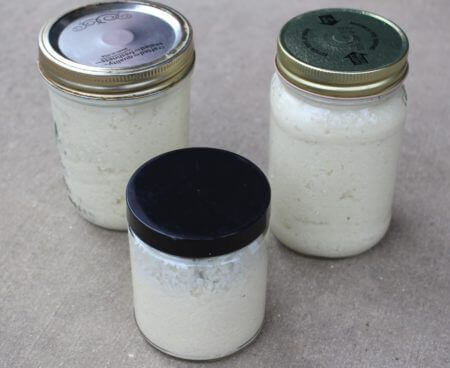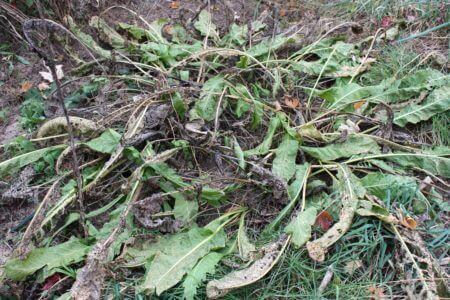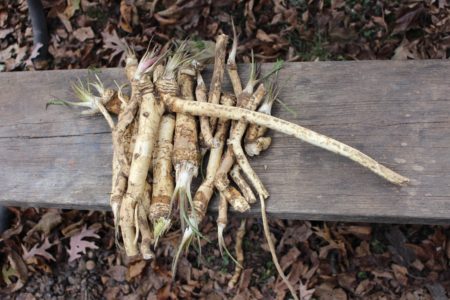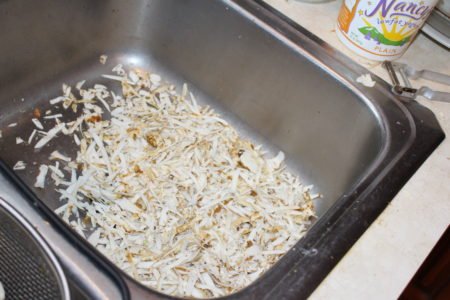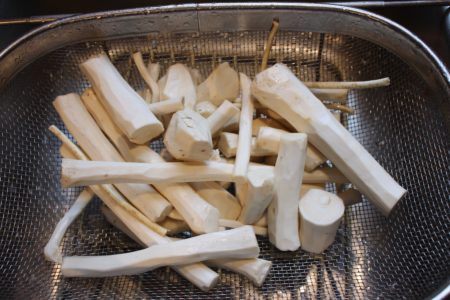Horseradish
I prepared horseradish sauce yesterday. I ran the horseradish twice through a food processor, first slicing, then shredding the pieces of root. As I was shredding, I added enough vinegar to keep the horseradish from drying out or heating up. The vinegar helps retain the hot flavor and allows it to keep for a while in the refrigerator. It will last a couple months. It’s a tasty condiment and it has an impressive list of purported health benefits.
Horseradish Plants
I grow horseradish in the herb bed, along with my plantings of perennial onions, garlic, leeks, and chives. It is very easy to grow and quite difficult to get rid of once you have it. I could encourage larger, cleaner, and easier to harvest roots if I grew it in softer soil, but it’s not high enough on my list of priorities to give it the treatment it deserves. I do like to have it around because the finished product is so good.
Horseradish Roots
I dug out several plants. The ground was frozen on top but quite soft below the thin crust. I didn’t try to get out the whole plant. That would have entailed a lot of work. Pieces left in the ground will most often grow back. I brushed off as much dirt as I could. I trimmed off the crowns which I shoved back into the soil where I had harvested, just to make sure there would be some around next year. It was too cold to wash them outside so I brought them inside to do that.
Horseradish Peelings
I’ve read recipes suggesting not peeling the roots, but just washing them before shredding. The roots I harvest are pretty gnarly, with folds packed with dirt, bug holes, rotten spots, and other imperfections I’d rather not have in my sauce. I think peeling is in order. The peeling process is where the vapors of mustard oil that make horseradish famous first show themselves. Strong whiffs of horseradish vapors could be likened to tear gas. Usually, it’s just some fun in the kitchen, but I think an overdose of fumes could be a real problem.
Peeled and Washed Horseradish Roots
Horseradish: washed, trimmed and ready for the food processor.

